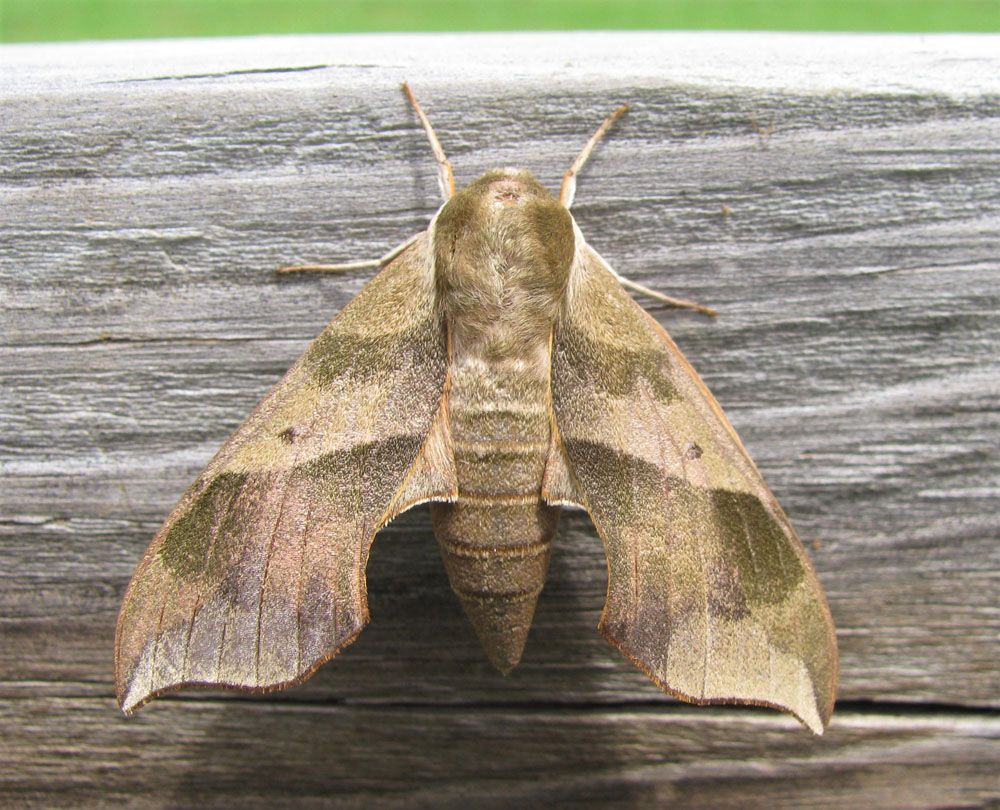
Virginia Creeper Sphinx – Darapsa Myron
Virginia Creeper Sphinx – Darapsa Myron
Scientific Name: Darapsa Myron
Common Name: Virginia Creeper Sphinx, Hog Sphinx
Distribution: In the United States, it may be found from Maine to south Florida and from North Dakota to Nebraska, New Mexico, Oklahoma, and Texas in the west. It is also found in southern Ontario and Quebec in Canada. It is prevalent in Mexico as well.
Host plants: Woodlands and brushy areas.
Identification: Typically, adult sphinx moths have a long, pointed abdomen and a massive, hefty body. The top of the forewing of the Virginia creeper sphinx moth is covered in wide bands of dark brown, tan, gray, or olive green. Observe a black dot situated about in the center of the forewing as well. The folded forewings frequently obscure the orange or reddish hindwings.
Sphinx moth larvae are “hornworms,” with a pointed “horn” at the end that resembles a tail. Young caterpillars have a large-looking horn and are thin and yellowish in color. Mature larvae have seven pairs of slanted lines on each side that combine into a broad line at the back. They can be green, pink, tan, or brown in color. The first abdominal segment, which is a short distance back from the head, is where the body swells.
Life Cycle: In the Northeastern United States, this moth flies during the warmer months; in the deep south, it is present almost all year round. Although it will respond to light easily, this species will also come to bait when it is presented. Light will visit both sexes. Because females’ abdomens are significantly bigger and rounder than males’, males are frequently little smaller than females. It appears that moths will oviposit wherever on the host plant. Before going on to the next Vitis leaf, female D. Myron sit on one and deposit twelve eggs. Because of this, caterpillars can be seen either alone or, if they are little, in small groups. It is also possible for the final instar larva to be brown.
This species is also seen on vitaceous vines. One particular preference is Vitis, closely followed by Parthenocissus quinquefolia. The easiest places for larvae to be found are on spreading grape vines, especially those in edge environments, or on trees, fences, stones, or the ground. Numerous caterpillars can be seen in large grape-growing areas and river washes. Searching for tiny holes in grape leaves in the early spring can frequently turn up sphingid larvae. Caterpillars occur in the Northeast between May and October. This species could be present all year round in the far south. Finding the larvae is made easier by their ability to glow when exposed to UV light.
Damage: Larvae consume the leaves of the Virginia Creeper, Peppervine (Ampelopsis spp.), and grape. Adults consume nectar.
Management: None were mentioned.
